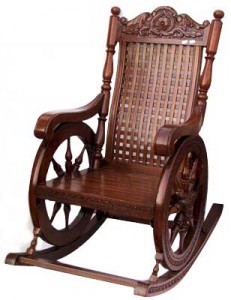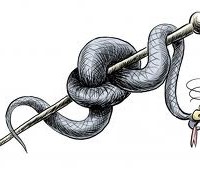- Two Thanksgiving Thoughts for the ACAPosted 10 years ago
- Shop til you Drop at the Healthcare Marketplace Part 2: Frustration!Posted 10 years ago
- An Early Casualty in the Affordable Care FightPosted 10 years ago
- Some Good News for a ChangePosted 10 years ago
What is Driving Health Care Costs Up?
People are aware that the cost of health care in the US is going up faster than their income. Experts cite the health care inflation rate in a range about four times salary increases. This was before the fall of 2008. The situation has been this way for decades. By the 1990’s the problem was heading to crisis proportions. A decade later it was a disaster for many working Americans.
Surprisingly there seems to be little public understanding of what exactly drove costs up at such a rapid rate. Is it greedy doctors? Greedy insurance companies? Greedy malpractice lawyers? Greedy, well-insured, power-hungry politicians? (You can see a theme developing here.) Much speculation has been bandied about to explain the predicament. Bandied speculation is not needed because the facts are at hand.
To grasp the underlying causes, it may be useful first to return to the basic model of supply and demand, known to every student who ever wandered into an economics class. When the demand outstrips supply, the price goes up. Suppliers realize they can charge a higher rate for their goods and services. Purchasers feel a need to pay it. And so it is in health care.
What is driving demand up?
For starters, people are living longer and their demands for medical services stretch over a longer time. As they age, they are more likely to develop the problems of wear-and-tear and chronic disease. This increases demand in a ratio with age. These sustained needs have a growing price tag over a longer period. People consume many more services than their grandparents ever did. Granny took aspirin and complained from her rocker. Junior today gets his hips and knees replaced and complains from the eighteenth hole on the golf course as he picks up his golf ball. It’s progress.
Secondly, the population has grown. There are many more people in the US seeking health care. The population in 1950 was 151,325,798. In 2010 the number was 308,745,538. More people living longer. In 1950, life expectancy was in the late 60’s. Now it exceeds 80 if you get to 65. You do the math.
Thirdly now there is a smorgasbord of medical services and devices one can demand. Technologic advances have created all sorts of wonderful things— miracle drugs, complicated surgeries, lengthy procedures, high-tech replacement parts, life-sparing preventive measures and heroic fixes. In 1950, there was little one could do for heart attack victims except put them to bed and watch. Today there are many complicated wonderful and not-so-wonderful things available, and patients expect them when they are sick. Trouble is they cost money. And that’s a problem if you don’t have it.
 As we moved past the mid-century increasing costs fell not directly to the patient but to third parties — the insurance subscriber and insurance companies. In the US this usually also meant the employer who covered this cost as a benefit to the employee and the family. Since 1970, Medicare and Medicaid appeared making the federal government the #1 third-party payer in the country. Insurance premiums rose. Third party payers largely absorbed these increased costs.
As we moved past the mid-century increasing costs fell not directly to the patient but to third parties — the insurance subscriber and insurance companies. In the US this usually also meant the employer who covered this cost as a benefit to the employee and the family. Since 1970, Medicare and Medicaid appeared making the federal government the #1 third-party payer in the country. Insurance premiums rose. Third party payers largely absorbed these increased costs.
Then they began screaming “uncle.”. Employers passed more of the cost increases on to employees in the form of co-pays and deductibles and ‘carve outs.’ Government began to regulate prices and reimbursements. Managed Care arrived. The costs flattened and went up steeply.
On the supply side, the numbers of doctors has risen but certainly no faster than demand. There are now about 954,000 doctors in the US. One third of those are primary care doctors. Over time doctors have specialized and sub-specialized. Few take care of all the patient’s problems. Primary care doctors sometimes describe themselves as traffic cops, bringing in specialists and consultants as needed, trying to coordinate the over-all care. Everyone would prefer to consult. Where one doctor might have worked to take care of a heart attack in 1950, now there may be three or more in attendance. Why? There is simply an awful lot to know about each facet of medicine.
So the doctor numbers are up, but the situation is far more complex. And the supply nowhere meets the recent spurt in demand. A shortage of doctors numbering over 100,00 is predicted by 2050. A shortage of nurses has been reality for sometime. Nursing numbers actually went down in the 1980’s. Nursing schools closed. Hospitals raided foreign countries. (See our previous post on nursing @ http://pennsquarepost.com/wordpress/?p=370)
Government has in fact had to step up and stimulate supply of health professionals over time. Arch conservatives did not protest. There are more medical schools and training programs producing more doctors and health professionals to keep up with the increasing demand. There are more hospitals, thanks to government stimulus initiatives over time. Government grants have helped provide the medical breakthroughs in drugs and hardware and soft ware. The age of electronics and the internet has radically transformed the practice of medicine. Government has promoted this.
Trouble is, all this has added to the over-all cost of health care. There are finite supplies of anti-cancer drugs, artificial hips, coronary artery stents, therapists, imaging machines, computers, data banks and the list goes on. Responses to the marketplace can be slow. The demand is more fluid. 
The arrival of the baby boomers at Medicare age has begun to stress this precarious situation greatly. Meanwhile the talk about health care in Washington goes from ludicrous to insulting to just plain delusional.
We will continue this topic again soon. Please write with your comments and questions.
TO BE CONTINUED
Tom Godfrey








